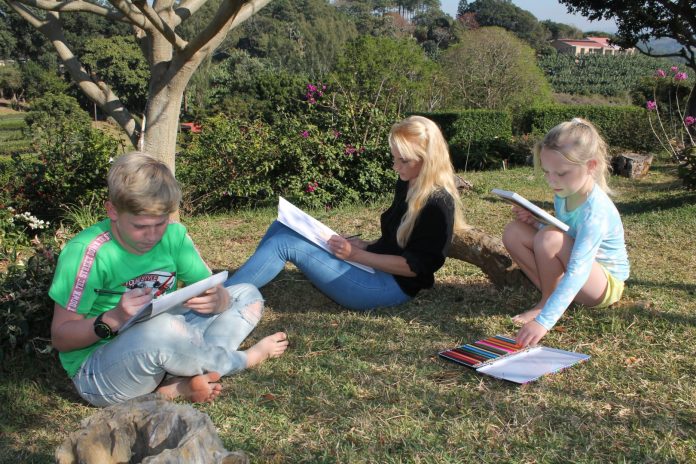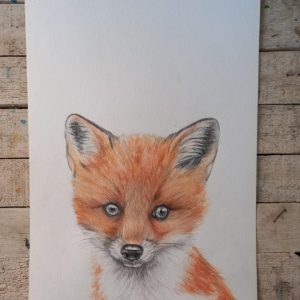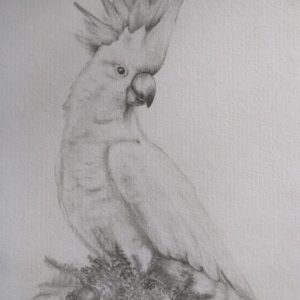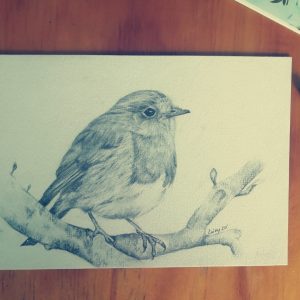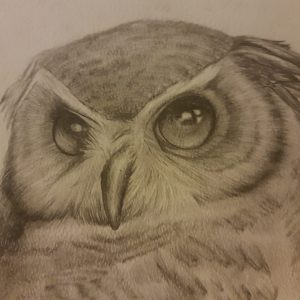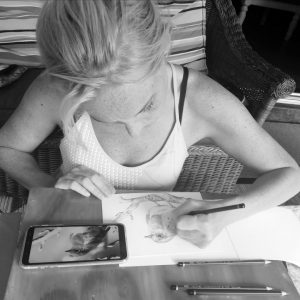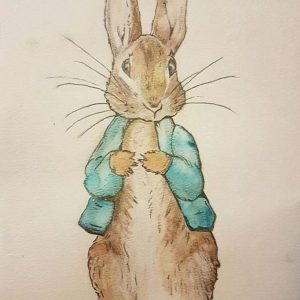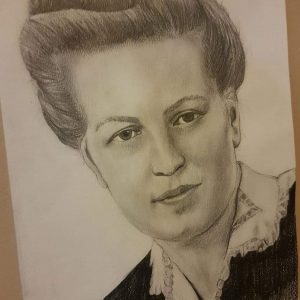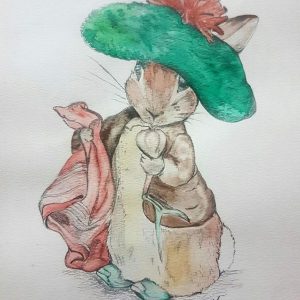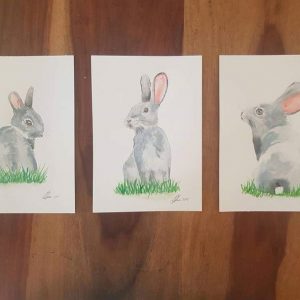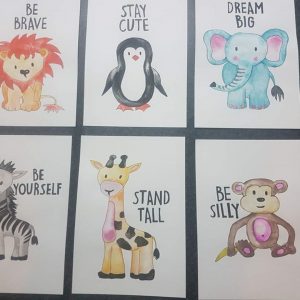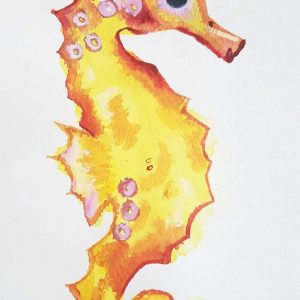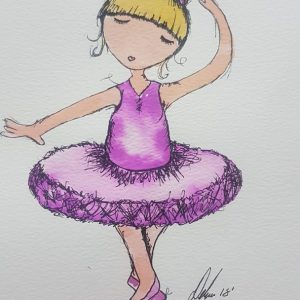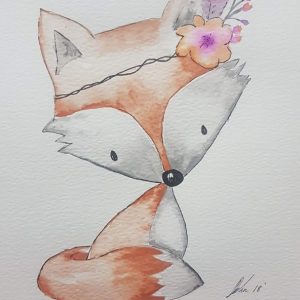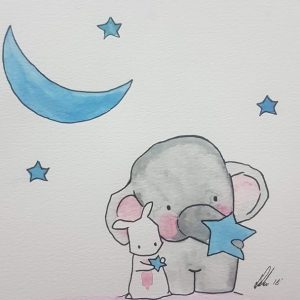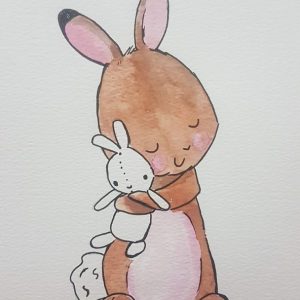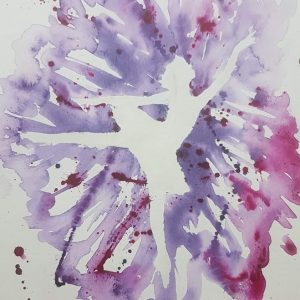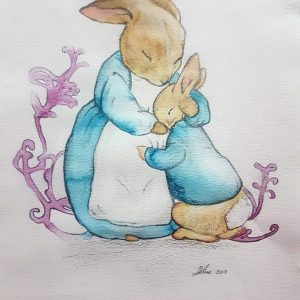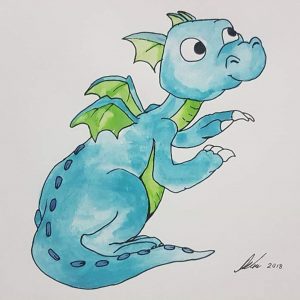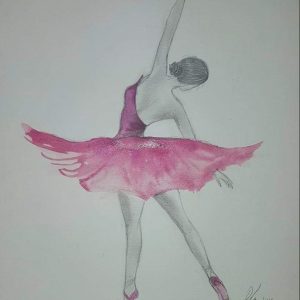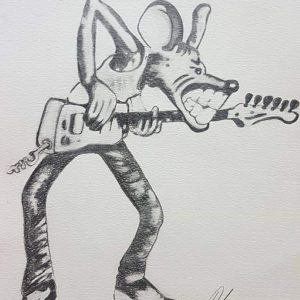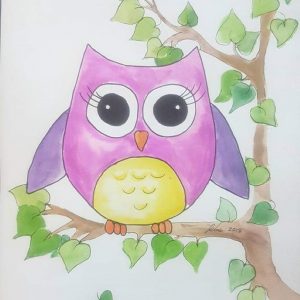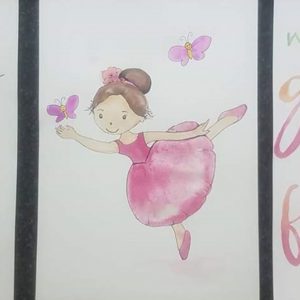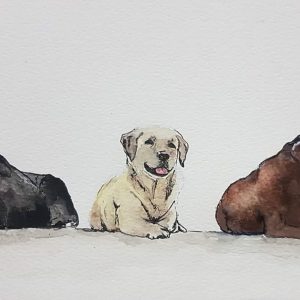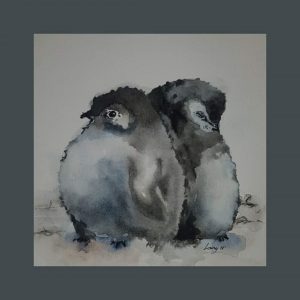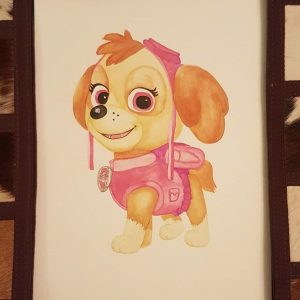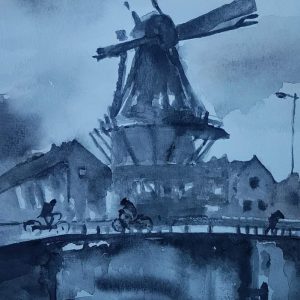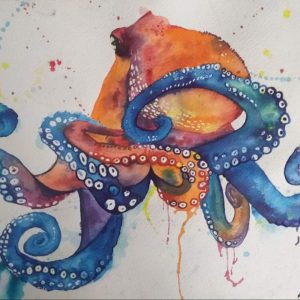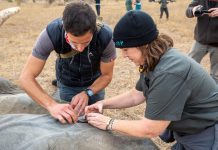A gifted artist and hard working teacher, Westville mother of two Delaine Clendennen truly believes in the power of healing through art, especially for children.
With an undeniable artistic talent from very young, it seemed inevitable that Delaine would pursue a career in art. But life took her in a different direction and she decided to become a teacher instead.
For years, her drawings gathered dust as she journeyed through marriage, motherhood and moulding the minds of little learners, until two years ago, when she realised that the artistic fire in her was still burning, and she hauled out her brushes.
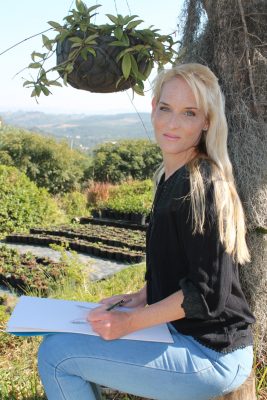
From charcoal to pencil to water colour paints, 36-year-old Delaine thrives on the art of manipulating materials to create a piece of work that is not only rewarding, but also therapeutic. She believes strongly in the power of healing through art and, as a Grade 000 teacher at Eden College in Durban, she has discovered that art and teaching go hand-in-hand.
We chat to Delaine while she’s on a break from ‘lockdown teaching’, and is seated in the garden with her two children, Bryce (11) and Kira (7). Each child is quietly working on a sketchpad after being asked to draw the first thing that came to mind to describe their feelings around the pandemic.
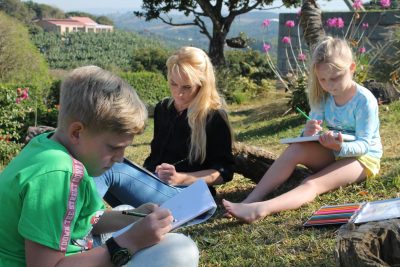
Bryce draws a battle scene because he wants to be in the army one day so that he can save the world. Kira draws a picture of her Granny Lina’s house, because it’s the place she’s missed most during lockdown. Delaine is working on a commission piece.
“I never really thought of drawing as anything other than a hobby, until a few years ago when I got divorced and moved out on my own with the kids. Art became a distraction from the pain and a way for me to heal. When I eventually sold my first piece of art, my eyes were opened to the fact that I wasn’t just drawing, sketching or painting for me. Other people actually liked my pictures too!”
Best known for her playful watercolours, many of which have found their homes in children’s bedrooms and baby nurseries, Delaine has gifted and sold a number of pieces both locally and overseas.
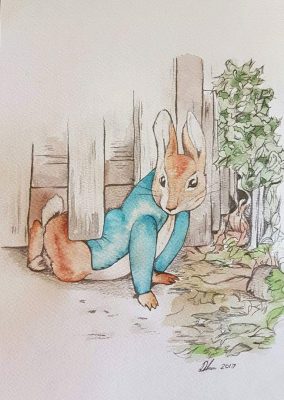
“When I first picked up art again, I started with charcoal. Being left handed means I can manoeuvre more easily to get the look I want. I then moved onto pencil. It’s such a simple material, but great for finer detail. I bring out the ink or water colours on the days when I feel like being more colourful!”
Delaine finds inspiration in things that calm her – animals, flowers, images symbolic of special places, people and memories. Using a printed or cellphone image as a visual reference, she can draw any image to any scale in whatever material she chooses to use at the time.
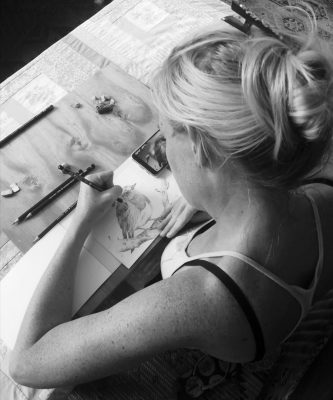
“I normally get an itch – like a feeling that I want to paint something specific. I imagine it for a few days and then, when I have time, I set out to do it. I am drawn to eyes, both human and animal. If I could work within a past art movement, it would be post-impressionist so I could meet up with Vincent van Gogh. I’ve always been inspired by his life and his work.”
As an artist with a professional career in teaching, Delaine always tries to find the best of both worlds – balancing the importance of educating and nurturing the little ones in her classroom with her desire to help them express themselves in a creative way.
“Since the beginning of time humans have found creative ways to express themselves with art. Give a child a pencil or paint brush and they immediately realise that marks are made and will continue to make these marks to see what they can create.”
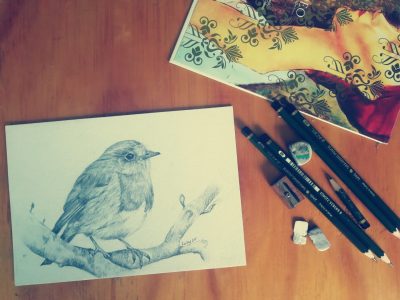
Throughout history, Delaine says, art has been used for healing. Studies show that drawing, painting and being creative forms brain wave patterns that enhance our nervous systems, hormonal balance and brain neurotransmitters. As a result, the body’s physiology shifts from stressed to serene. It’s the same with children, she says.
“Art can be a launching point for conversations that reveal what a child is thinking. It is often easier for a child to express difficult feelings through drawing or painting.”
It is this artistic expression that can give both the teacher and parent a clearer sense of a child’s inner struggle, and ultimately open a gateway to guide them.
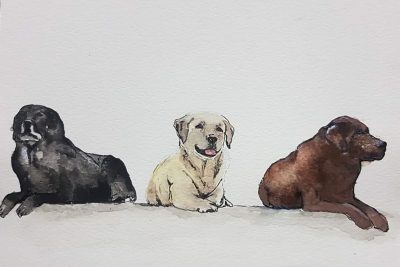
“Parents often tell me that they are not very creative, but this doesn’t matter at all. Children are on another level, and if you give them the right tools and the encouragement, they will make amazing stuff. Art is not just paper, paint and a pencil – it is so much more. That’s where the process becomes more important than the end product. The coordination, creativity and thought processes that went into creating the end product are what teach us everything about them.”
Delaine says parents can also use therapeutic art techniques with their children. “Just stock up on supplies – giant rolls of paper, coloured paper, crayons, paint and a variety of markers – and try out some fun art exercises to explore new ways to communicate with your child.”
When asked whether she regretted or questioned her career choice, Delaine says definitely not. “I absolutely love teaching. The children in my class make me happy. I get to be creative every day, and I can never feel sad or down because somehow they always manage to put a smile on my face. I need them as much as they need me. I love art more now than ever before, and I enjoy the fact that I can thrive in a life where I am able to do both – art and teach. I’ve always believed that as long as you love what you do, everything will fall into place.”
Details: 083 3200 607, FB: Art by Lainey, IG: art.bylainey
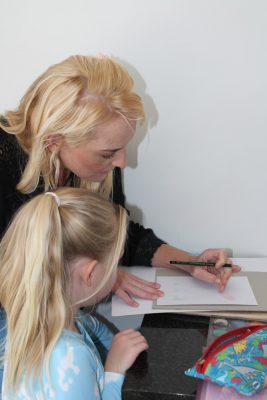
Delaine’s tips for helping your child express his or herself…
Self-portraits: On a large sheet of paper, trace your young child’s body. Have them fill it in with their feelings, using different colours to represent those emotions. Discuss it.
Picture the future: Get your child to make two drawings – how things are now and how they’d like them to be. This will enable them to start taking the steps required to get there.
Show and tell: Ask your child to embark on an imaginary journey, eyes closed, such as a walk through a special place, and then have them draw their experience. The visual result will give you both something to look at as they share their journey.
Play around with art: Although it’s a great release for a child to draw feelings, pictures don’t have to be static. Your child can erase part of it, or draw over it in ‘healing’ colours – an immediate transformation that feels magical.
Capture a memory: The special places your child visits on his or her imaginary journeys can be healing, so Google, print and hang pictures of them (perhaps in their bedroom) to remind them that they can revisit these places whenever they need to.

